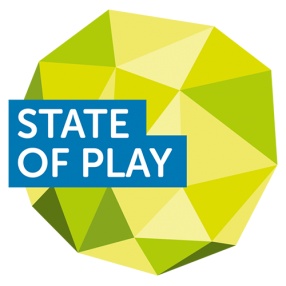Closing off the State of Play sessions was Mike Rose of No More Robots who was explaining to us why things aren't *quite* as bleak on Steam as we have been lead to believe.
Rose opened up by showing us how Steam looks at this point in time. In 2017, the average indie game sold 500 copies media and 3,700 mean, generating $2,000 in median revenue, $18,000 mean.
In its first month on sale, the average price for these games was $7 (median) and $8.30 (mean).
For January 2018, this had all degraded, with 100 copies sold (median) and 600 (mean), making $280 in revenue (median, $2,500 mean). Meanwhile in its first month on sale, the median price was $5 ($6 mean).
But, there's a catch.
"When you're looking at the numbers, you have to remember they are skewed by absolute shite," Rose said.
He's referring to asset flipping games or low-effort games that are there to make a quick buck. In order to see what the market is actually like.
In order to do this, Rose removed what he referred to as 'trash games' from the mix, so this is a subjective measure, but gives a more realistic impression of the landscape than we had before.
A brand new indie game in 2018 sells 1,000 copies (median, 4,500 mean) generating $10,000 in revenue (median, $27,000 mean). Meanwhile, its average price is $10 (median, $12 mean).
All of this is to say that PC games are sell badly, and even if you have a high quality product, you are looking likely to sell around 1,000 in the first month on sale.
Price is a point that Rose circled back on.
"You'll notice the average price is a lot higher now," he said.
"Again, most of the shit games will sell for low amounts of money. But also, price for me is quite a big thing. Because of the skewed numbers, people have started to misappropriate that people aren't paying money for games anymore. I think that's absolute rubbish. Actually a lot of people - and this is a lot harder to prove - are looking down the list of new games on Steam and are seeing the higher price ones and are thinking: 'Maybe this isn't shit' and are looking at them."







